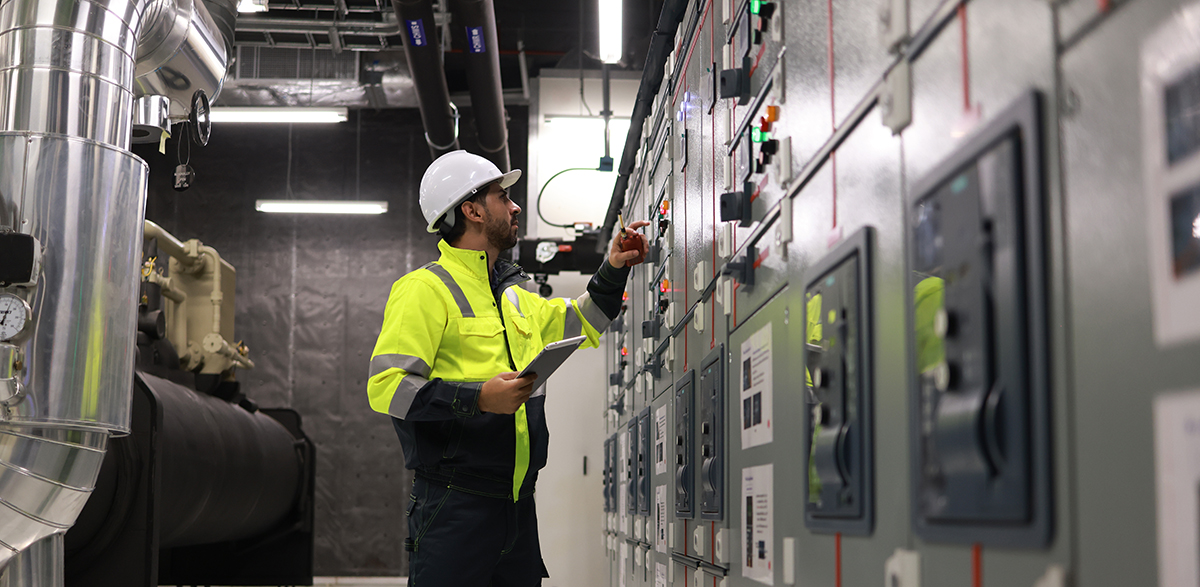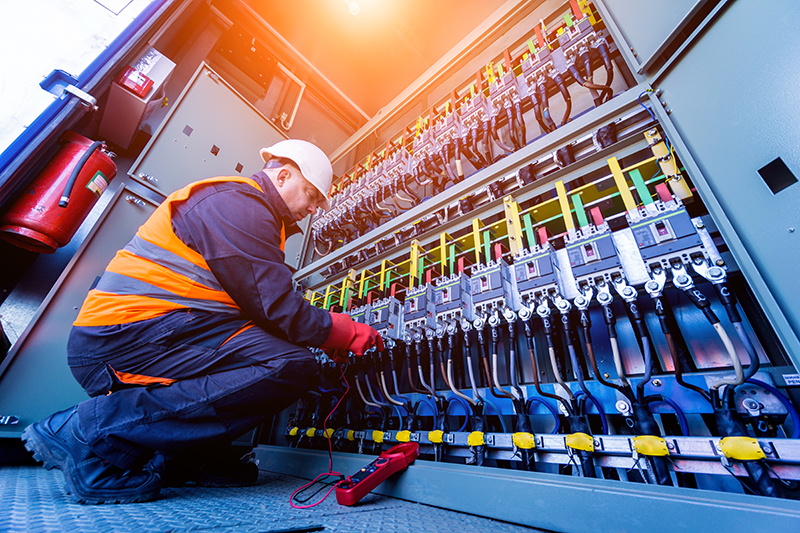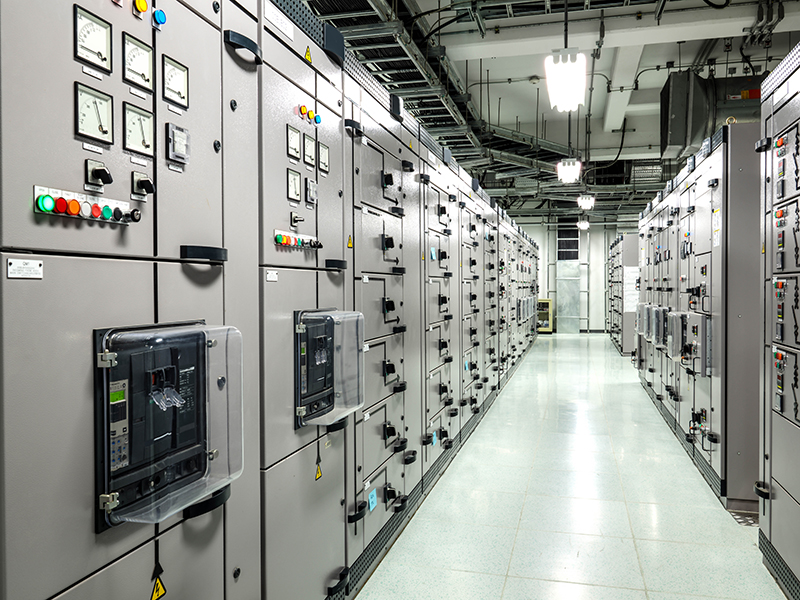Switchgear Safety: Best Practices to Protect Lives and Equipment

Published: Friday, 02 May 2025
Switchgear is an essential component of electrical systems, responsible for controlling, protecting, and isolating electrical equipment. Working with switchgear can cause significant safety risks, especially when dealing with high-voltage systems. This article helps to outline the crucial safety precautions to ensure the well-being of professionals handling switchgear.
Introduction to Switchgear
Switchgear is vital for the distribution of electricity safely and efficiently; you are likely to see switchgear in industrial, commercial, or utility settings. With its role to manage high currents and voltages, without the proper safety measures there is the potential for accidents or injuries. Understanding the risks and adhering to safety protocols that are put into place will help to prevent these potential injuries.
Understanding Electrical Hazards
Working with switchgear poses several threats, including:
Arc Flashes – A sudden and intense burst of energy produced from an arc fault. These can cause serious burns and equipment damage. As the energy released can reach temperatures of up to 19,000°C, which is 4 times the temperature of the sun.
Electrical Shocks – Direct or indirect contact with live parts could lead to serious injuries or fatalities.
Burns – Caused from hot surfaces or explosions. Being close to high-energy components will increase this risk.
Equipment Failures – Faulty components, such as worn insulation or corroded connectors, can lead to short circuits, fires, or catastrophic system breakdowns, endangering your workers and operations.
Pre-Work Safety Measures
It is important before you start any work on and with switchgear that the following precautions should be taken:
Training and Certification – Make sure that all personnel are properly trained and certified to work with switchgear. The training should cover theoretical knowledge, practical skills, and familiarity with the different types of switchgear that will be handled.
Risk Assessments – By conducting a risk assessment you can identify the potential hazards and how best to control the risks. A risk assessment will usually cover 5 aspects:
- Identification of hazard – Determine where the potential sources of danger are, these can be electrical faults, mechanical failures, and environmental factors.
- Risk Analysis – This step is when you would evaluate the chance and severity of the hazards. These hazards include arc flashes, electrical shocks, burns, and equipment failures.
- Risk Evaluation – Prioritise the risks based on impact and determine their appropriate control measures.
- Implementation of controls – Apply measures to help mitigate the identified risks.
- Review and monitoring – Monitor how effective the implemented controls are and make sure to keep the risk assessment updated when necessary.
Lockout/Tagout (LOTO) – LOTO is a safety procedure to ensure that dangerous equipment has been correctly shut off and cannot be started again until after maintenance or repair work has been completed. You should always double-check that the equipment has been fully switched off and de-energised with the correct tools before you can begin work.
Tools and Equipment Checks – It is important to check all your tools and equipment to make sure they are functional and safety-compliant. Make sure that your tools are in good condition and suitable for the job you are doing.
Site Preparation – Before you start your work, make sure that your work area is clean, well-lit, and free from any unnecessary obstacles. You should also keep other personnel up to date with clear communication to let them know about any ongoing maintenance or repairs.

Use of Personal Protective Equipment (PPE)
Having correct PPE is vital to minimise the risk of injury. Key PPE items include:
Arc-Rated Clothing – With the dangers that arc flashes can cause to a person; you must wear the correct protective clothing to help provide the protection you need against arc flashes. It is important to note that arc-rated clothing should be used as a final defence against arc flashes, and you should always start with your pre-work safety measures before you start working with switchgear.
It is important to note that arc-rated clothing varies on the installation you are working on. Full protection would apply to high-end installations like sub stations. We recommend you check the level of protection needed before investing in arc-rated clothing that isn’t suitable for your job.
Insulated Gloves – Insulated gloves help to protect you from electrical shock.
Safety Goggles and Face Shields – provides the user with protection for their eyes and shields their face from sparks and debris.
Hard Hats and Safety Boots – These provide general protection in high-risk environments and will help protect you from falling debris.
Inspection and Maintenance Precautions
Routine inspections and maintenance are vital for the safety of your operators of switchgear. Key guidelines will include:
- Inspect your switchgear for wear, damage, or signs of overheating, and make sure any necessary servicing takes place when needed.
- Cleaning components to prevent dust accumulation and ensure that there is proper ventilation to your devices.
- You should always use the manufacturer-recommended maintenance schedules and procedures to avoid any risk of your switchgear not being up to date.

Safe Operation of Switchgear
When you operate switchgear safely, it requires you to adhere to already established protocols:
- You should use the controls and handles correctly to avoid any unnecessary exposure to live parts putting you at risk.
- Be sure to monitor warning indicators and alarms for signs of malfunction that would lead to hazards.
- Avoid operating switchgear in wet or damp conditions.
Emergency Preparedness
Being prepared for switchgear emergencies can help to significantly reduce the impact of accidents. These steps include:
- Make sure your workers have had the necessary training in emergency response, including first aid for electrical injuries.
- Have fire extinguishers and first aid kits easily accessible to your workers.
- Clearly establish evacuation and communication procedures in case of any workplace incidents.
Common Mistakes to Avoid
Improper and unsafe practices can lead to severe consequences and should be always avoided. Avoid:
- Skipping lockout/tagout procedures can result in fines for not following procedure and it puts employees at risk, ranging from minor injuries to fatal accidents.
- Using incorrect or worn-out PPE – PPE should always be kept up to standard, and when your equipment begins to wear out it should be replaced before you begin working on switchgear.
- Neglecting routine maintenance – By neglecting your routine maintenance, switchgear becomes more hazardous when future checks need to be made and puts the next employee to use the machinery at risk.
- Working alone on high-voltage equipment without proper supervision can put you in unnecessary harm’s way, and if an accident were to occur, there would not be anyone there to help you.
Switchgear is a critical element of electrical systems, but it requires careful handling to mitigate risks. By following safety protocols in place, using the correct PPE, and staying up to date with necessary training and regulations, electricians will help to create a safer working environment. Always prioritise safety every time you work with switchgear.

